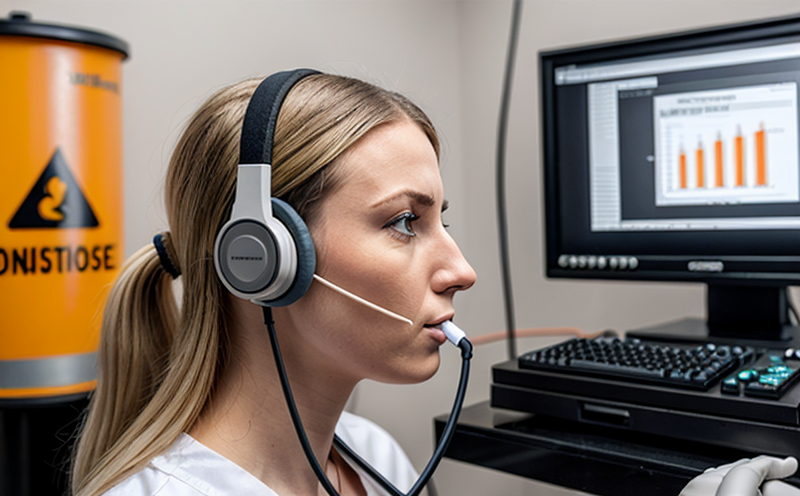ISO 16832 Noise Exposure Measurement in Workplaces
The ISO 16832 standard provides a framework for measuring and evaluating occupational noise exposure in work environments. This service ensures compliance with international safety standards, which is critical for protecting the hearing health of employees exposed to high levels of noise over extended periods.
Occupational noise exposure can lead to significant auditory damage if not properly managed. ISO 16832 addresses this by offering a comprehensive method for assessing sound pressure levels and duration of noise exposure. This process is essential for employers who must ensure that their workplaces meet the required noise limit thresholds set forth by global safety regulations.
The standard focuses on three main aspects:
- Measurement of sound pressure levels in the workplace environment.
- Determination of the duration and frequency distribution of noise exposure.
- Evaluation of the risk associated with prolonged noise exposure based on these measurements.
The testing process involves deploying calibrated dosimeters worn by workers during their shifts. These devices capture real-time sound pressure levels and integrate them over time, providing a summary measure that reflects the overall exposure experienced throughout the working day.
Once collected, the data is analyzed using statistical methods to determine compliance with the permissible noise limits specified in ISO 16832. The results help employers identify areas where improvements are needed and implement necessary measures to reduce harmful noise levels.
This service is particularly important for industries such as manufacturing, construction, mining, and transportation, where workers frequently encounter hazardous noise environments. By adhering to this standard, organizations not only protect their employees' hearing but also demonstrate a commitment to maintaining safe working conditions—a key aspect of corporate social responsibility.
The implementation of ISO 16832 goes beyond mere compliance; it fosters a culture of safety and health awareness within the workplace. It encourages continuous monitoring and evaluation, ensuring that noise control measures remain effective over time as work processes evolve.
Why It Matters
The importance of ISO 16832 cannot be overstated in today's safety-conscious work environments. Noise-induced hearing loss is a significant occupational hazard that can lead to long-term health issues and reduced quality of life for affected individuals. By implementing this testing protocol, employers demonstrate their commitment to employee welfare and compliance with international standards.
Occupational noise exposure not only poses direct risks to workers' auditory health but also has broader implications for overall workplace safety. High noise levels can mask other important sounds, making it difficult for employees to communicate effectively or detect potential hazards. This increases the likelihood of accidents and injuries, further emphasizing the need for rigorous noise management practices.
The implementation of ISO 16832 helps organizations mitigate these risks by providing a structured approach to measuring and managing noise exposure. It allows employers to identify areas where improvements are needed and implement necessary measures to reduce harmful noise levels effectively.
Moreover, compliance with this standard can contribute significantly to an organization's reputation for responsible management practices. In today's competitive market, demonstrating a commitment to employee safety and well-being is increasingly valued by consumers and stakeholders alike. This service plays a vital role in fostering such positive perceptions.
Applied Standards
The ISO 16832 standard is widely recognized for its comprehensive approach to occupational noise exposure measurement. It aligns with other international standards such as ISO 4871, which provides guidelines for the design of hearing protection programs, and ISO 9612, which sets out general requirements for working conditions in noisy environments.
These standards collectively form a robust framework that ensures workplaces are safe and compliant. By adhering to these guidelines, organizations not only meet regulatory requirements but also enhance their operational efficiency and safety culture.
Why Choose This Test
Comprehensive measurement of sound pressure levels in the workplace environment.
Detailed determination of the duration and frequency distribution of noise exposure.
Evaluation of the risk associated with prolonged noise exposure based on these measurements.
Ensures compliance with international safety standards, thereby protecting employees' hearing health.
Supports continuous monitoring and evaluation, ensuring that noise control measures remain effective over time.
The ISO 16832 Noise Exposure Measurement in Workplaces service offers several advantages. Firstly, it provides accurate and reliable data on noise exposure levels, which is crucial for making informed decisions about workplace safety. Secondly, the testing process helps identify areas where improvements are needed, allowing employers to implement necessary measures effectively.
Moreover, compliance with this standard enhances an organization's reputation for responsible management practices. In today's competitive market, demonstrating a commitment to employee welfare and well-being is increasingly valued by consumers and stakeholders alike. This service plays a vital role in fostering such positive perceptions.





